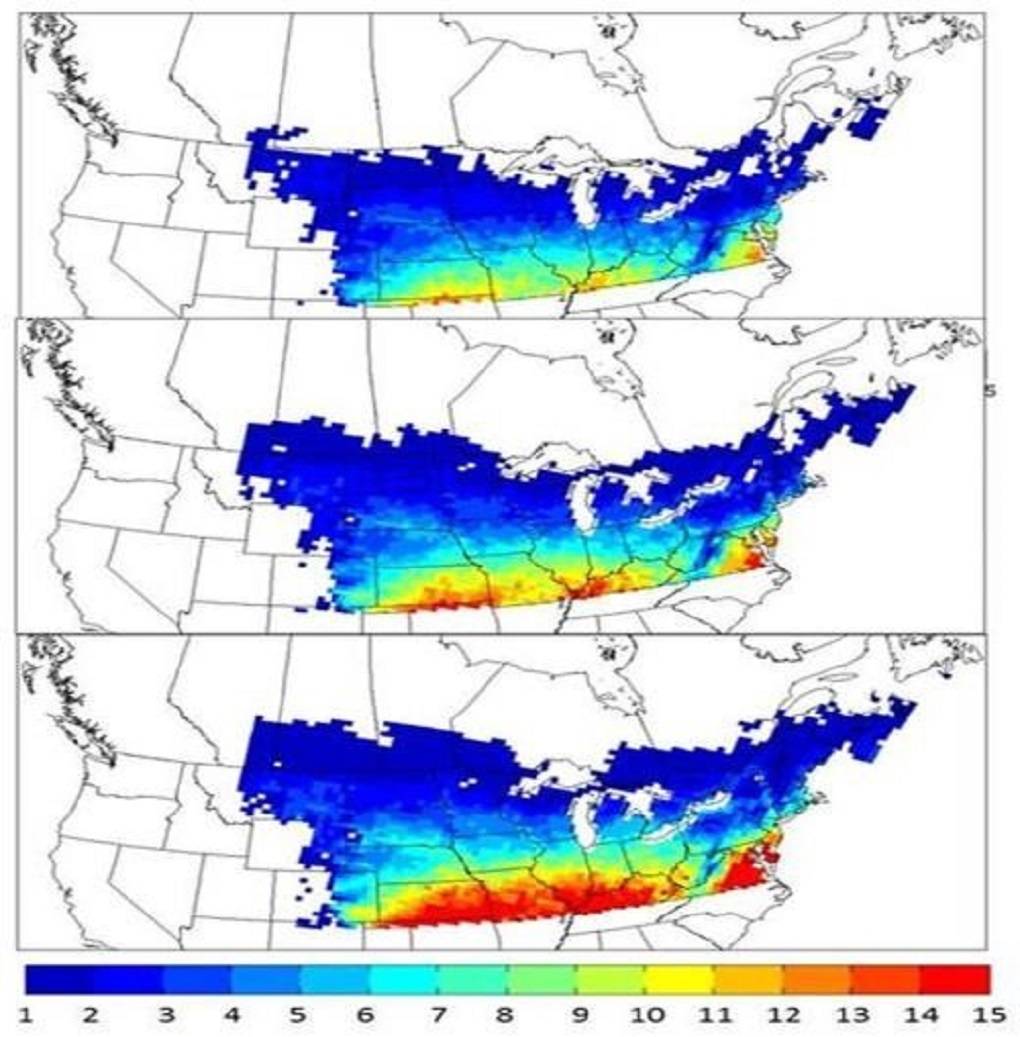
It is now globally accepted that climate change is occurring due to the accumulation of greenhouse gases in the atmosphere by various means like fuel combustion, depletion of forests, etc. Climate change may affect health in many different ways and is the biggest health threat of the 21st Century.
For example: As an outcome of an increase in frequency and intensity of heat waves, reduction in cold-related deaths, changes in the distributions of vector-borne diseases, and effects on the risk of disasters and malnutrition like due to floods and droughts. Climate change affects human health through a wide range of hazardous exposures, including extreme weather events, altered air quality, shifting patterns of infectious diseases, ocean acidification, conflict and migration, and as well as sea-level rise (Mc Michael et al., 2012). Sea level rise due to climate change is likely to threaten low-lying coastal populations and affect their health.

Above figure is an example of a model-based prediction of how projected climate change may impact the distribution of a disease vector (in this case, the Lyme disease tick vector I. scapularis) at a continental scale reproduced from Ogden et al. (2014c). The level of risk, as indicated by the color scale, is measured as the basic reproduction number (R0) of the tick. Below an R0 of 1, populations of the tick would not be expected to survive. The upper map shows R0 values estimated from observed climate (for 1971–2000), and the lower two show R0 values estimated from projected climate obtained from the CRCM4.2.3 regional climate model following the SRES A2 greenhouse gas emission scenario for 2011 to 2040 (middle panel) and 2041 to 2070 (bottom panel). Within the zones where R0 of I. scapularis is >1, the geographic occurrence of Lyme disease risk is also limited by other environmental variables.
There are several mechanisms by which climate can affect health (Haines A et al. 2004). Extremes of temperature and rainfall such as heat waves, floods, and drought may have immediate effects or long-term effects resulting in acute or chronic disease. For example, changes in rainfall and temperature may affect the distribution of disease vectors like of that malaria and dengue and the incidence of diarrheal diseases.

Climate change is also likely to affect biodiversity and the ecosystem goods and services on which human health is dependent. There are also concerns that flood, drought and environmental degradation associated with climate change may lead to population displacement, and more environmental refugees and can cause disorder in lives on a very large scale.
For example, the population that has experienced flooding may suffer from a sustained increase in mental disorders (Ahren M et al. 2005).
Climate change can also affect levels of air pollutants which in turn may affect human survival. For example, Tropospheric Ozone pollution may be higher in some areas of Europe and lower in others but the relationships are still imperfectly understood (Langner J et al. 2005). Climate change is affecting vector-borne and other infectious diseases. There is evidence of vector species responding to climate change in Europe (Purse BV et al. 2005). Changes in the frequency of weather extremes over recent decades have been observed (McCarthy J et al. 2001). There are many health outcomes sensitive to isolated extreme events. For example, heavy rainfall and high temperature

Thus, climate change is now regarded as the biggest global health problem requiring health sector preparedness (Smith et al., 2014; Watts et al., 2015). Its effects are already being observed in China and future projections represent an unacceptably high and potentially catastrophic risk to human health (Zing et al., 2008).
Realizing the aspects of the climate system, an increase in hazardous exposures associated with climate change is unavailable (Haines et al., 2014) and health impacts will substantially depend on the degree of effective adaptation. It is also the call to improve health facilities in the rural backward sector along with urban areas because the impacts of climate change will be concentrated in poorer and vulnerable populations, where climate-sensitive diseases are common due to a lack of adaptation and precautions to climate change (WHO,2008).
Author
Name: MOHIT KUMAR MUSADDI
Class: 4th year (B.Sc. Agriculture)
College: Shivalik Institute of Professional Studies, Dehradun
Mobile/WhatsApp: 9083969685
e_Mail – [email protected]













Share your comments